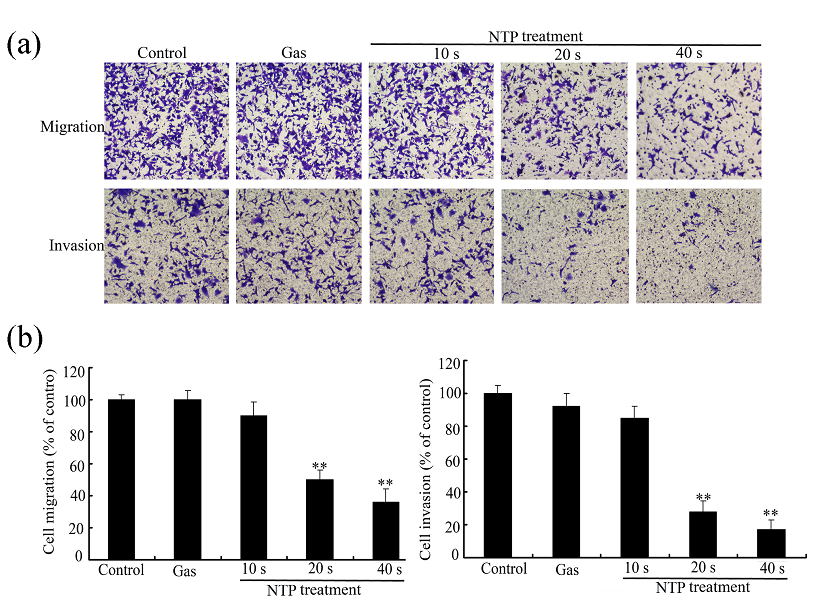Non-thermal plasma (NTP) has been reported as one rising technology in medicine, such as induction of blood coagulation, accelerating wound healing and so on. NTP, as a potential method, shows bright prospect for significantly inhibiting the proliferation of tumor cells in cancer therapy. However, molecular mechanism of NTP-induced inhibition of tumor migration and invasion remains unclear.
A research, jointly conducted by Prof. HAN Wei's study group from Radiation Division of Center of medical physics and technology, Hefei Institutes of Physical Science, Chinese Academy of Science (CAS) and their partners from Institute of Plasma Physics, Hefei Institutes of Physical Science, CAS, showed that Dielectric Barrier Discharge Plasma effectively suppress the invasion and metastasis of Hela cells through scratch test, matrigel invasion assay and matrix metalloproteinase enzyme activity analysis. Further investigation indicated that plasma reduced the activity and protein expression of the matrix metalloproteinase (MMP)-9 enzyme via regulating ERK1/2 and JNK signaling pathways, and then inhibited the invasion of Hela cells.
These findings provide possible "answer" to NTP-inhibited cancer cells invasion, and also bring the basic knowledge of application in cervical cancer treatment.
This study entitled “Non-thermal plasma inhibits human cervical cancer HeLa cells invasiveness by suppressing the MAPK pathway and decreasing matrix metalloproteinase-9 expression” was published online in Scientific Reports on January 28, 2016.
This research was supported by National Natural Science Foundation of China, Natural Science Fund of Anhui Province and Presidential Foundation of Hefei institutes of Physical Science.

Effects of NTP on invasion and migration of HeLa cells (Image by LI Wei.)
Contact:
Prof. HAN Wei, Ph.D Principal Investigator
Center for Medical Physics and Technology, Hefei Institutes of Physical Science, Chinese Academy of Sciences
Hefei, Anhui 230031, China
Tel: +86 551 65595100
E-mail: hanw@hfcas.ac.cn